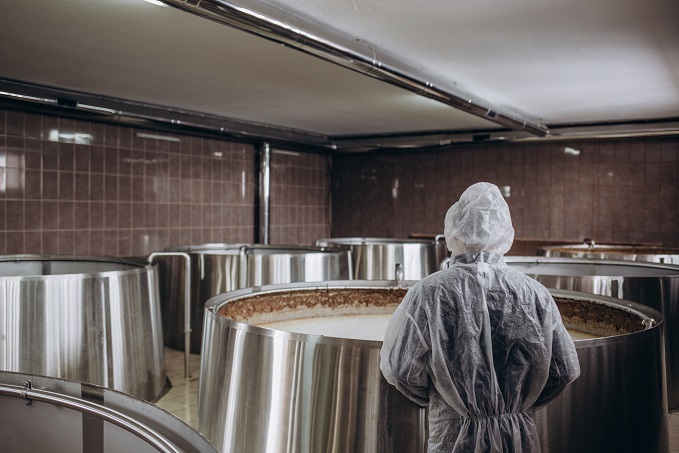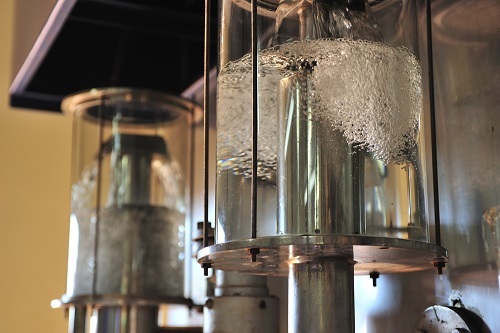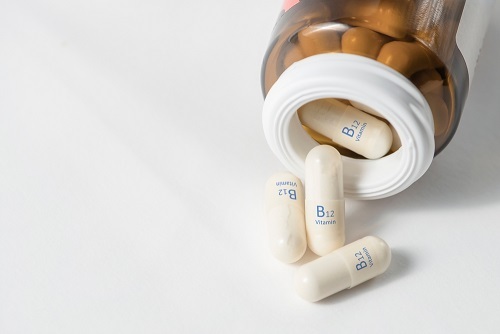
 Data Structure
Data Structure Networking
Networking RDBMS
RDBMS Operating System
Operating System Java
Java MS Excel
MS Excel iOS
iOS HTML
HTML CSS
CSS Android
Android Python
Python C Programming
C Programming C++
C++ C#
C# MongoDB
MongoDB MySQL
MySQL Javascript
Javascript PHP
PHP
- Selected Reading
- UPSC IAS Exams Notes
- Developer's Best Practices
- Questions and Answers
- Effective Resume Writing
- HR Interview Questions
- Computer Glossary
- Who is Who
What are Primary Metabolites?
Introduction
A metabolite is an intermediate or final result of metabolism in biochemistry. Small molecules that act in the catalytic activity on their own often as a cofactor to an enzyme, in defense, and interactions with other organisms are just a few of the many roles that metabolites play example- pigments, odorants, and pheromones.

The intermediate products produced during metabolism are known as metabolites, and they are catalyzed by a variety of enzymes that naturally exist inside cells. Usually, tiny molecules are referred to as metabolites.
Primary metabolites are produced as a result of the fundamental metabolic processes that are triggered by bodily enzymes. They then assist in carrying out processes like your body's cell proliferation. Moreover, these metabolites support the preservation of cellular functions.
Some of the main industrially produced metabolites are amino acids, vitamins, and organic acids. The primary metabolites that are most commonly produced on an industrial basis are amino acids, alcohol, acetic acid, and citric acid.
Definition
Primary metabolite plays a crucial role in appropriate growth, development, and reproduction. Typically, it helps the organism physiologically. Usually, many organisms or cells include a main metabolite. It is also known as a central metabolite, a term with a far narrower definition (present in any autonomously growing cell or organism). Lactic acid and certain amino acids are typical examples of primary metabolites
What Are the Characteristic Features of Primary Metabolites?
Following are the characteristics of primary metabolites
- Primary metabolites are synthesized during the organism's growth mechanism that is while it is in its growth phase. The term "trophophase" refers to the growth stage where the synthesis of primary metabolites takes place.
- Few primary metabolites, such as amino acids, are specific to certain cells or creatures; otherwise, they are present in all types of organisms.
- Usually body produces primary metabolites in extremely large amounts. This is due to the fact that the body constantly needs these metabolites for a number of vital functions.
- Primary metabolites are divided into two categories, Primary essential metabolites, and primary metabolic end products.
- Proteins, carbohydrates, lipids, vitamins, lactic acid, enzymes, ethanol, butanol, and other substances are examples of primary metabolites.
What Are the Functions of the Primary Metabolites?
Primary metabolites play a crucial role in many essential bodily functions and are directly involved in vital physiological processes. Below are a few functions of primary metabolites:
- The energy needed to carry out physical activity is provided by primary metabolites. Example- carbs and lipids.
- Proteins are crucial primary metabolites that support the development, maintenance, and repair of human tissues and cells. All metabolic reactions in the body are catalyzed by a variety of enzymes.
- Nucleic acids major metabolites that are crucial for the transmission of genetic information to succeeding generations.
- Lipids serve as the structural foundation for organelles and cells. Moreover, it offers twice as much energy as proteins or carbohydrates.
- A living thing cannot exist without primary metabolites.

Commercial Production of Primary Metabolites
Some of the main industrially produced primary metabolites are amino acids, vitamins, and organic acids. Following are the primary metabolites that are most commonly produced on an industrial basis.
Amino acids
The two most common amino acids in this category are glutamate and lysine, which are mostly employed as feed and food additives, respectively. As yield 1.5 million tonnes of glutamate and 850000 tonnes of lysine HCl are produced through fermentation.
L-glutamic Acid
A powerful flavour enhancer produced by fermentation is monosodium glutamate (MSG). The fermentation of glutamic acid had been discovered in Japan (Kinoshita et al., 1957).
L-Lysine
The majority of cereals eaten worldwide are lacking in the amino acid l-lysine. This is a crucial component of the billion-dollar animal feed industry and is necessary for the growth of animals. Such grains become balanced food or feed for pigs, chickens, and other livestock when lysine is added.
Vitamins
More than half of commercially produced vitamins are given as pet feeds. The annual market for vitamins is in the range of billions of dollars. Vitamin B12 (cyanocobalamin), ascorbic acid (vitamin C), riboflavin (vitamin B2), pantothenic acid (vitamin B5), and biotin are the five vitamins that are commercially produced by microbes. Metabolic engineering has improved some vitamin processes.
Vitamin B12
For a very long time, industrial production of vitamin B12 is in existence. Commercial production of vitamin B12 is roughly 10 tons per year.
Production of B12
By using species of Pseudomonas or Propionibacterium, fermentation is carried out in either full or partial anaerobiosis. Although Pseudomonas denitrificans and Propionibacterium shermanii are the main industrial organisms, Propionibacterium freudenreichii can generate 206 mg l1. P. denitrificans strains generating 150 mg via conventional strain improvement.

Organic Acid
The main organic acids that are commercially used as chemicals are lactic, citric, gluconic, and itaconic. Metabolic engineering as well as conventional mutation and screening/selection strategies have enhanced the production of organic acids.
Acetic Acid
Nearly half of the acetic acid worldwide is produced by microbial processes (Causey et al., 2003). Since 4000 BC, vinegar has been made microbiologically. The ideal bacteria to use for vinegar fermentation are Gluconacetobacter and Acetobacter species.
Citric Acid
About 1 million tons of citric acid is produced annually by Aspergillus niger and yeasts. Sales have surpassed $2 billion annually. The finest A. niger strains can convert 250 g of glucose or sucrose into almost 200 g of citric acid per liter. The abundant carbon supply, low pH, dissolved oxygen, and low quantities of several trace metals and phosphate are crucial for fermentation.
Ethanol and Related Compounds
Brazil produces more than 4 billion gallons of ethanol from cane sugar each year, which is used either as a fuel blend of 22-25% or as pure ethanol. The United States generated more than 4 billion gallons of ethanol, while the rest of the globe produced nearly 8 billion gallons. The market is currently worth $15 billion.
Ethanol
The fermentation of sugar or a polysaccharide that can be depolymerized into fermentable sugar results in the production of ethanol, which is a main metabolite. Hexoses are fermented using Saccharomyces cerevisiae, while for lactose Kluyveromyces fragilis is used. If pentose is the substrate, you can employ Pichia stipitis or a species of Candida.
Glycerol
The industries of pharmaceuticals, food, cosmetics, paint, and many more all require glycerol. Although in fermentation using S. cerevisiae and osmotolerant yeasts, the majority of glycerol is produced by chemical synthesis from propylene or by extraction of components from the fat and oil industries.
Conclusion
One of the most frequently produced primary metabolites in the field of industrial microbiology is alcohol. Alcohol is specifically employed in fermentation processes that result in beverages like beer and wine. The above-mentioned primary metabolites are all commercially of high value.

